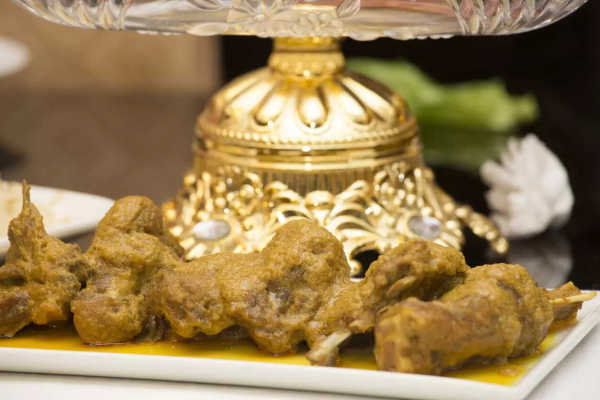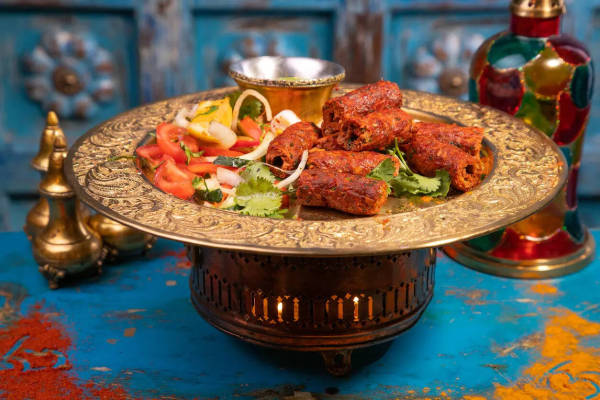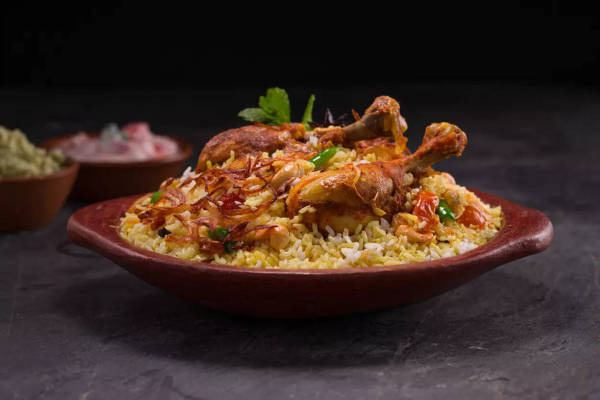
Walk into two royal kitchens, centuries ago, and you feel the split straight away. In one, pots clang, spices screech in hot oil, and saffron threads float up like strips of light. In the other, the pots stay sealed, steam builds slowly, and when it finally escapes, it carries the gentle smell of cardamom and ghee. Both kitchens belong to rulers; both are indulgent. But their voices are different. Scroll down to hear how Mughal and Awadhi cooking tell two related, very distinct stories.
Mughal - theatre on the plate

Mughal food makes an entrance. It arrived with emperors who brought Persian dishes into Indian kitchens: heavy gravies, rich dairy, nuts and dried fruit, rosewater and saffron used not sparingly but with showmanship. Dishes were layered—meat braised until fork-soft, then finished with ground nuts or a pat of cream; rice studded with raisins and saffron, desserts perfumed like a garden. Eating at a Mughal table was a show in itself: texture, color, and aroma all aimed to dazzle. The point wasn’t subtlety; it was abundance and a kind of edible opulence.
Awadhi - craft over clamor
Awadhi food was learned from the Mughals but learned to whisper. In Lucknow, the Nawabs taught cooks to slow the clock down. Dum pukht, food sealed and cooked over low heat became the method and the metaphor: patience, restraint, refinement. Spices are measured so that each note can be heard; meat is coaxed into tenderness so soft it almost dissolves. The result is food that charms by restraint: galouti kebabs that melt instead of bite, nihari that arrives like a warm memory at dawn, biryanis that are airy and aromatic rather than loud.
Kebabs show the difference best

Look at kebabs and you’ll taste the story. Mughal kebabs are bold and smoky; seekh, boti, shami, built for flavour and presence. Awadhi kebabs are about texture and touch. The galouti legend, made for a toothless noble, tells you everything: meat ground fine, spices blended with care, the finish so soft it’s almost velvet. One style hits you; the other invites you in.
Biryani - two songs from the same scale

Biryani under the Mughals was a jewelled crown; saffron, nuts, heady spices layered with rice and meat. In Awadh, the biryani learned to be more conversational. The dum process lets rice and meat trade flavors slowly; nothing drowns the other. Eat both and you’ll hear the difference: one sings loudly, one hums and stays with you.
Why it matters now
These aren’t just historical labels. The two approaches shaped kitchens across the subcontinent. Restaurants and home cooks borrow from both: the Mughal habit of richness for celebrations, the Awadhi discipline for weeknight finesse. Once you know the difference, you start tasting intention; not only ingredients but what the cook wanted to say.
The final taste
Mughal cuisine dazzles; it wears wealth on the plate. Awadhi cuisine soothes; it refines and lingers. Together they gave India a language of royal food-one that still teaches us how to celebrate, how to wait, and how to turn a meal into an experience.



